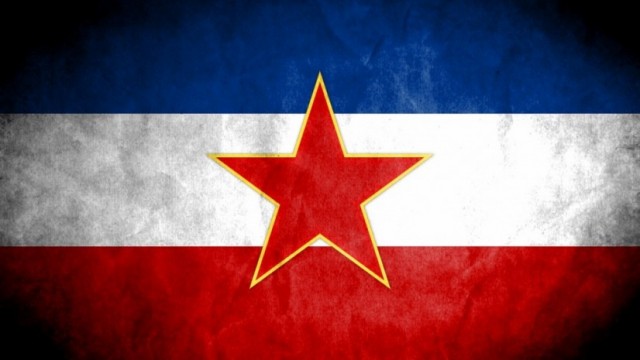Ethnic cleansing and war crimes, 1991-1995 – part three
TransConflict is pleased to present part three of a chapter of “Confronting the Yugoslav controversies – a scholars’ initiative”, entitled “Ethnic cleansing and war crimes, 1991-1995”, which “aims at describing causes, features, and consequences of ethnic cleansing as a policy in Bosnia-Hercegovina during the war.”
Suggested Reading |
Conflict Background |
Articles |
By Marie-Janine Calic
Definitions
Various definitions of ethnic cleansing have been put forward. According to a narrower definition by Bell-Fialkoff, “population cleansing is a planned, deliberate removal from a certain territory of an undesirable population distinguished by one or more characteristics such as ethnicity, religion, race, class, or sexual preference. These characteristics must serve as the basis for removal for it to qualify as cleansing.”[17] Jacques Semelin on the other hand argues that ethnic cleansing is not necessarily a result of intent but may well appear as a by-product of violent conflagrations.[18]
Dražen Petrović gives a broader definition of ethnic cleansing, namely a “well-defined policy of a particular group of persons to systematically eliminate another group from a given territory on the basis of religious, ethnic or national origin. Such a policy involves violence and is very often connected with military operations. It is to be achieved by all possible means, from discrimination to extermination, and entails violations of human rights and international humanitarian law.”[19]
Because ethnic cleansing usually involves physical abuse and mass killing, actual understanding tends to merge the meaning of the terms ethnic cleansing and genocide. The broadest approach in this regard has been presented by Michael Mann, who interprets genocide as a subcategory within the broader concept of ethnic cleansing. He puts particular emphasis on “the extent to which a group is eliminated (cleansed) from a community and the extent to which violence is used to achieve it.” Consequently, he distinguishes between partial and total types of cleansing, encompassing forms of suppression, pogroms, politicide, and genocide.[20]
Most definitions by scholars insist, however, on an analytical distinction between the two terms, arguing against a tendency to confound and obfuscate them.[21] For instance, Norman Naimark maintains that “ethnic cleansing and genocide are two different activities, and the differences between them are important. As in the case of determining first-degree murder, intentionality is the critical distinction.”[22] He underlines that ethnic cleansing forms a wider continuum, ranging from pressure to emigrate to population transfer and mass expulsion and eventually to genocide. By the same token, Jacques Semelin argues that Genocide comes within the same destructivity continuum as ethnic cleansing but is essentially distinguishable from it. Their respective dynamics are indeed both aimed at eradication. However, in the case of ethnic cleansing, the departure or flight of the targeted population is still possible, while in that of genocide, all ways out are barred. I would therefore define genocide as this specific civilian destruction process that is directed at the total eradication of a community.[23]
Várdy and Tooley suggest starting with a definition of genocide as “the planned, directed, and systematic extermination of a national or ethnic group,” while insisting that ethnic cleansing is more focused on the process of removing people from a given territory.”[24]
It goes without saying that the definition of ethnic cleansing will certainly undergo further examining and refining as scholars analyze this phenomenon in light of new evidence and continuing debate. At this stage, however, most scholarly definitions agree on (1) the systematic character of such a practice, (2) the identification of specific target groups by ethnic, national, or religious characteristics, (3) the deliberate use of violence, and (4) the implicit assumption of the intent of the authorities either to support such a practice or to refrain from prevention.
‘Ethnic cleansing and war crimes, 1991-1995′ is a component of the larger Scholars’ Initiative‘Confronting Yugoslav Controversies’ (Second Edition), extracts of which will be published on TransConflict.com every Friday.
Previous parts of the chapter ‘Ethnic cleansing and war crimes, 1991-1995’ are available through the following links:
Footnotes
17) Bell-Fialkoff, Ethnic Cleansing, 3–4.
18) Jacques Semelin, “Analysis of a Mass-Crime: Ethnic Cleansing in the Former Yugoslavia, 1991–1999,” The Specter of Genocide: Mass Murder in Historical Perspective, ed. Robert Gellately and Ben Kiernan (Cambridge: Cambridge University Press, 2003),
353–70.
19) Petrović, “Ethnic Cleansing,” 11.
20) Michael Mann, The Dark Side of Democracy: Explaining Ethnic Cleansing (Cambridge: Cambridge University Press, 2004), 11–12.
21) Naimark, Fires of Hatred; Bell-Fialkoff, Ethnic Cleansing, 1–4.
22) Naimark, Fires of Hatred, 3.
23) Jacques Semelin, “What is Genocide?” European Review of History 12, no. 1 (March 2005): 81–89.
24) Steven Béla Várdy and T. Hunt Tooley, eds., Ethnic Cleansing in Twentieth-Century Europe (New York: Columbia University Press, 2003), 3.




















#TransConflict Ethnic cleansing and war crimes, 1991-1995 – part 3: TransConflict is pleased to present part t… http://t.co/ooNOGM8VDZ
Ethnic cleansing and war crimes, 1991-1995 – part 3 http://t.co/nioh4P5fMr
Ethnic cleansing and war crimes, 1991-1995 – part 3 http://t.co/ZX4wo5rort #Nonprofit
RT @Aktivizmo: Ethnic cleansing and war crimes, 1991-1995 – part 3 http://t.co/ZX4wo5rort #Nonprofit